In module 6, it’s time to tell you the story about one of the most difficult parts of our sail around Europe – crossing the notorious Bay of Biscay. Before we sail out into its waters, we will once again undergo Coast Guard inspections at sea – we wrote about the continuous inspections in previous Modules. Also, we will have to sail through the Alderney Race, an 8-mile strait between the Channel Islands and France. But let’s take it one step at a time!
Departing from Cherbourg, France
We set off on our sail across the Bay of Biscay from an unusual place – from Cherbourg. It’s 500 miles, so assuming an average speed of 5 knots, we will spend over 4 days at sea. This will be the longest non-stop sail on our yacht, although not the longest in our lives. It would definitely be better to set off from Brest, located further west. This would shorten our route by 150 miles, but friends are already waiting for us in Spain, so full speed ahead!
Sailing Alderney Race
We leave Cherbourg at 3:30 a.m. to match the currents in the aforementioned Alderney Race. As the name suggests, the strait has something to do with speed. The currents here can reach up to 12 knots during spring tides – we have also written about the tides before, here. When the wind direction is opposite to the current, a breaking wave builds up in the strait, which is dangerous for navigation. In strong winds and currents, its height can reach 4 m! In the Alderney Race, visibility also drops significantly during bad weather.
As usual, we choose the safest option. In this case, it is windless weather, but with a favorable current of 3 knots. We motor most of the time and the current adds another 3 knots to our 5, which gives us our own little “race”.
Another inspection at sea
After passing the Channel Islands, the wind starts to pick up, so we sail in long tacks towards Brest. The next morning we see a coast guard ship approaching us. The pattern is familiar to us – they want to board our yacht and search it. The idea of spending 2 hours adrift with strangers searching our lockers for the third time in the last few days definitely doesn’t appeal to us. We’ve already had one night at sea and we still have 3 days to go. We refuse to let them board, using the search confirmation document we received in Cherbourg (we wrote about the search in Cherbourg in previous Module 5). After verifying the authenticity of the paper with the customs office in Cherbourg, they let us go. This time we win.
A moment later, we are joined by a pod of dolphins, who keep us company for a few hours. It’s definitely a nice touch as we sail into the waters of the notorious Bay of Biscay.
Crossing notorious Bay of Biscay
Weather patterns in the Bay of Biscay
The Bay of Biscay has had a bad reputation for thousands of years. Particularly unfavorable conditions occur here when strong winds blow from the SW. The North Atlantic depression is responsible for their formation. For this reason, crossing the Bay to the south is more difficult. In the summer, when the Low is formed further north of the Bay of Biscay, the chance for favorable conditions is greater. After the Low passes, there are usually several days of favorable, NW winds. It is usually enough to cross the Bay before the next hit of heavy weather. The best time to plan a sail is late spring and summer – from the end of May to July. The end of summer (August – September) is the period when the frequency of gales increases, reaching their records at the end of September and in autumn.
Continental shelf in the Bay of Biscay
Rough conditions in the Bay of Biscay are caused not only by the SW winds, but also by the geography of the Bay itself. The continental shelf runs through the Bay of Biscay. It is characterized by a rapid change in depth over a short distance. The depth drops from about 4.5 km to about 100 m in a distance of only 35 miles – a really huge drop. It causes masses of water pushed by SW winds to build up in the shallows, creating high, steep and breaking waves.
Because of that, we plan to cross the Bay of Biscay to the south with a NW wind. A few days earlier, the wind was much stronger, so we encounter a built-up wave and a dropping, but still strong wind. Well, we expected it. The first day and a half are not the most pleasant.
How our Biscay Bay crossing looked like?
A high wave coming in from the side rolls the yacht from side to side. The tilts are so deep that life comes down into survival mode. It is not about danger here. Our brave Malo copes very well in such conditions and I am sure she will cope in even worse ones. However, we have to reduce functioning, sleeping, eating and other basic life activities to the bare minimum. Moving around the boat is very difficult. Sleep deprivation is also a problem. It is very difficult to sleep when your body is constantly being jerked from side to side. Fortunately, we do not have to worry about food, because we have prepared ready, dried food for this occasion, which you just need to pour boiling water over and you have a good, wholesome meal. Although sometimes boiling water is also a challenge!
Personal safety when sailing shorthanded
At this point, I will take a break from the journey and briefly describe how we protect ourselves in such conditions, sailing with a 2-person crew. First of all, we wear high-quality inflatable Spinlock life jackets. We have personal MOB1 radio transponders installed in the life vests, which activate the alarm if a person goes overboard. Additionally, the signal from the radio beacons will be visible on the AIS receivers of all units in the vicinity.
We put on life jackets according to our comfort and common sense – we do not wear them all the time. When the conditions are difficult or when we leave the cockpit, we additionally attach ourselves to the boat with a harness. We have lifelines stretched along the entire length of the boat. It’s a special, strong tapes to which we attach ourselves when walking around in difficult conditions. But of course, we limit trips outside the cockpit to the bare minimum.
A person who stays on night watch always wears a life jacket and is attached to the boat, regardless of the conditions.
A post about all our emergency equipment – signaling, raft, life jackets etc. will be published soon. We will describe what we decided on and what and how we use it.
Update: The post is already live, you can check it here.
Nevertheless, I would like to appeal to use life jackets and harnesses. Some famous sailors believe that they are unnecessary, and that you have to move around the boat in such a way as not to fall out. I’m happy for their courage and luck that nothing has ever happened to them. However, encouraging such trivialization of safety issues is very harmful.
Sailing the Bay of Biscay – the better part
After a day and a half of struggling with the waters of the sinister Bay, we start to see rays of sunshine, and the waves seem to be a little smaller. We move more and more willingly on the deck, we start to eat something more than dried food. I also start to take the first photos and videos – previously it was absolutely impossible. Check out the one below – it has already calmed down.
We sleep in until we can, getting up only for our watches. Before we even notice, Spain is on the horizon! The proximity of land also brings calm weather, so we motor to the very end.
Arrival to Spain
After 4 days and 11 hours, we reached the marina in A Coruña! This is a very big event for us, because we feel that we have achieved one of the goals for this season – reaching a warm place! We can put our hats away, dry our full weather gear and enjoy Spain in the company of friends who are the first guests on our deck 🙂
Sailing the Bay of Biscay – summary
This Bay of Biscay has tired us out. But I guess we can’t live without this type of adventure. As I write this text, we have already planned to sail it twice in the 2025 season 🙂
But for now, we invite you to the next Module, where it will be much warmer than before – we will sail along the coast of Spain, Portugal, we will reach the “end of the world” and our beloved Porto. But so that it doesn’t get too comfy, the issue of killer whales will start… more on that soon!
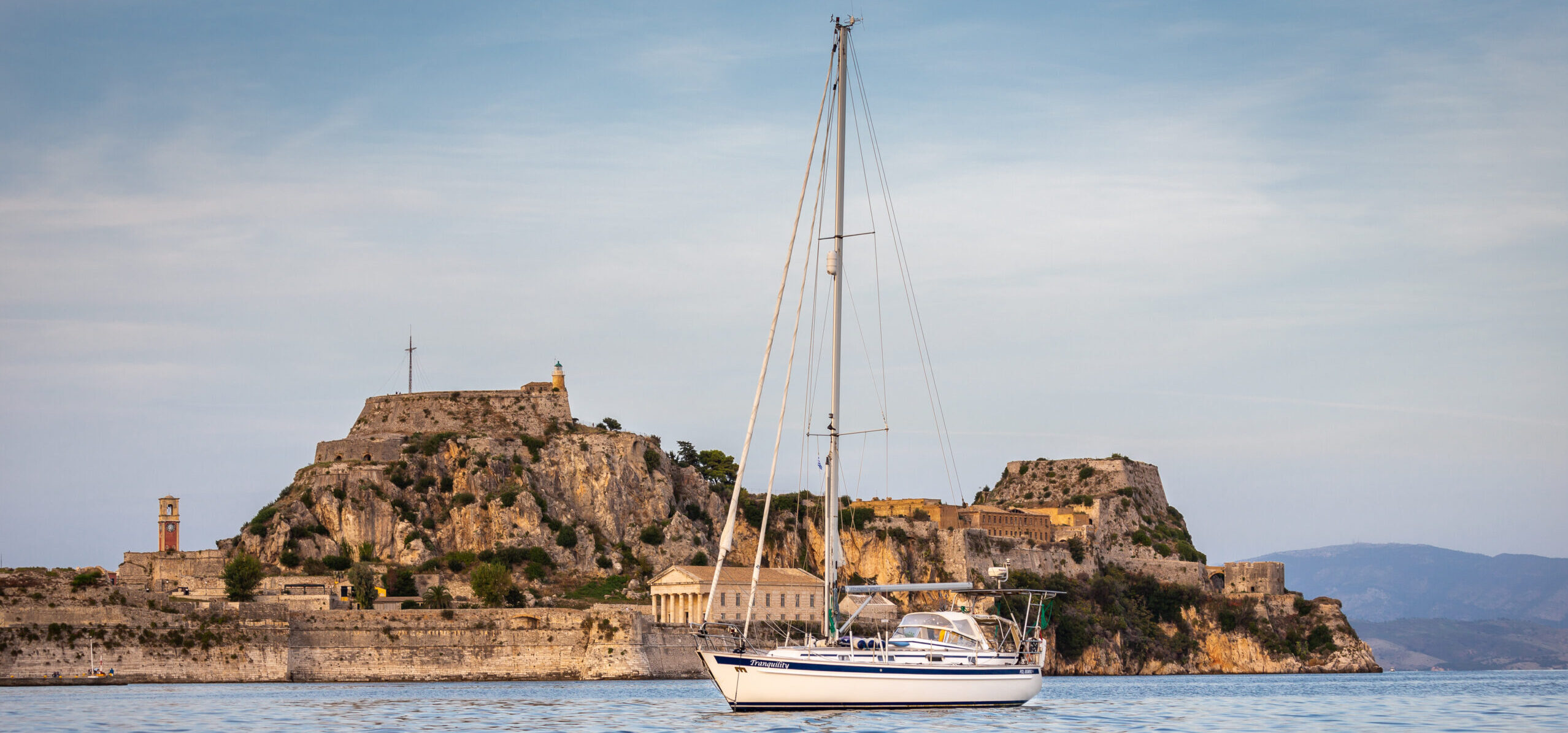
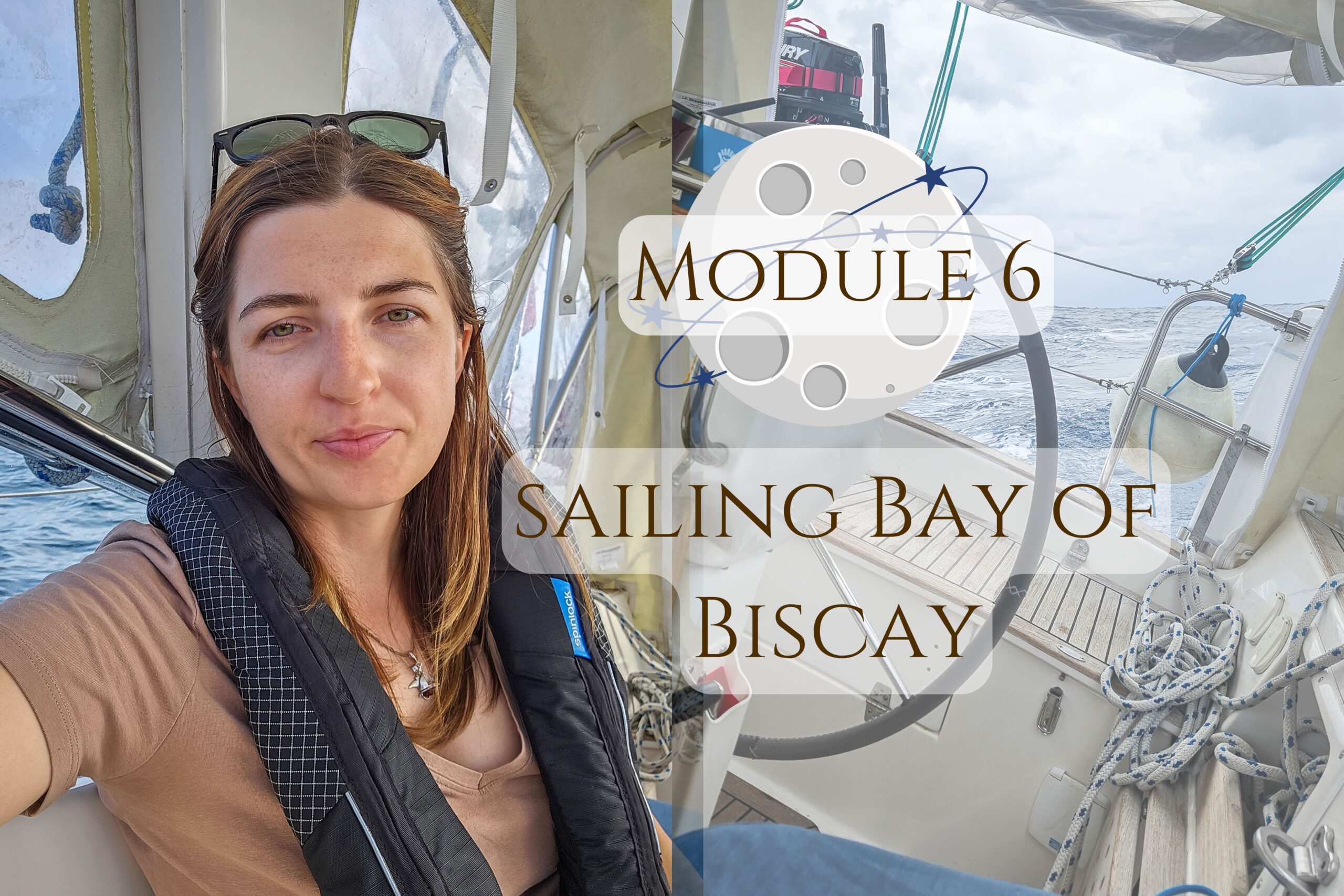
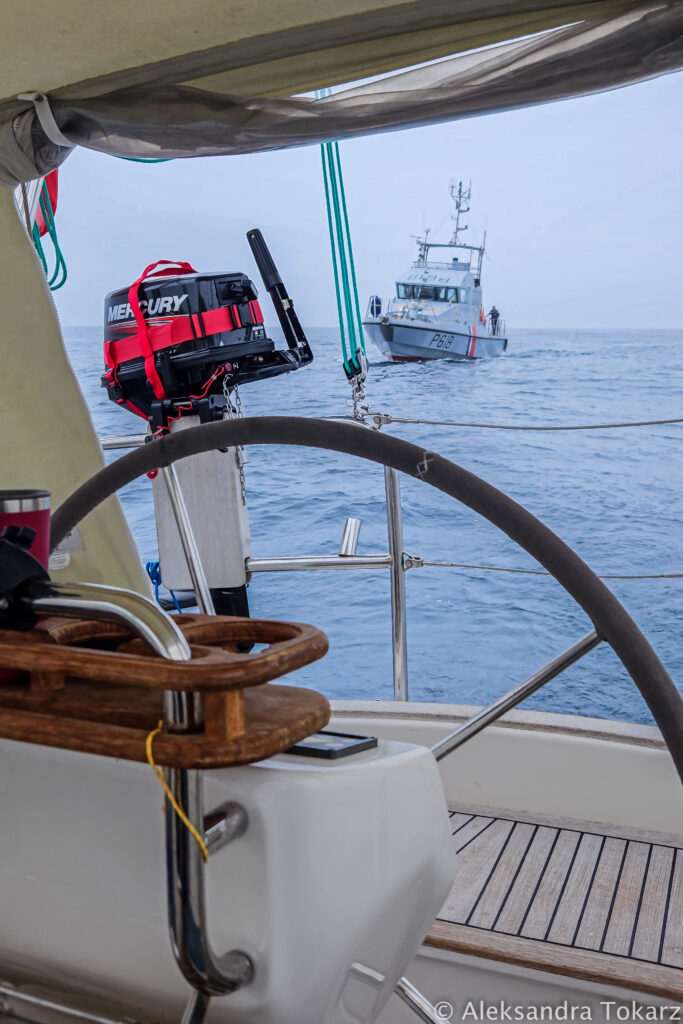
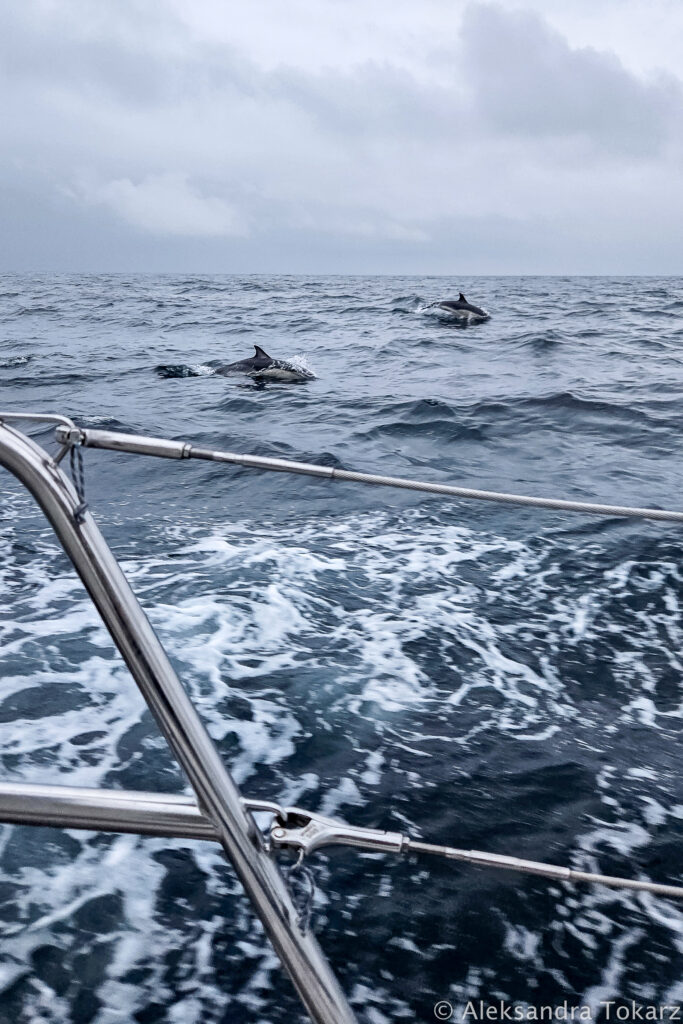
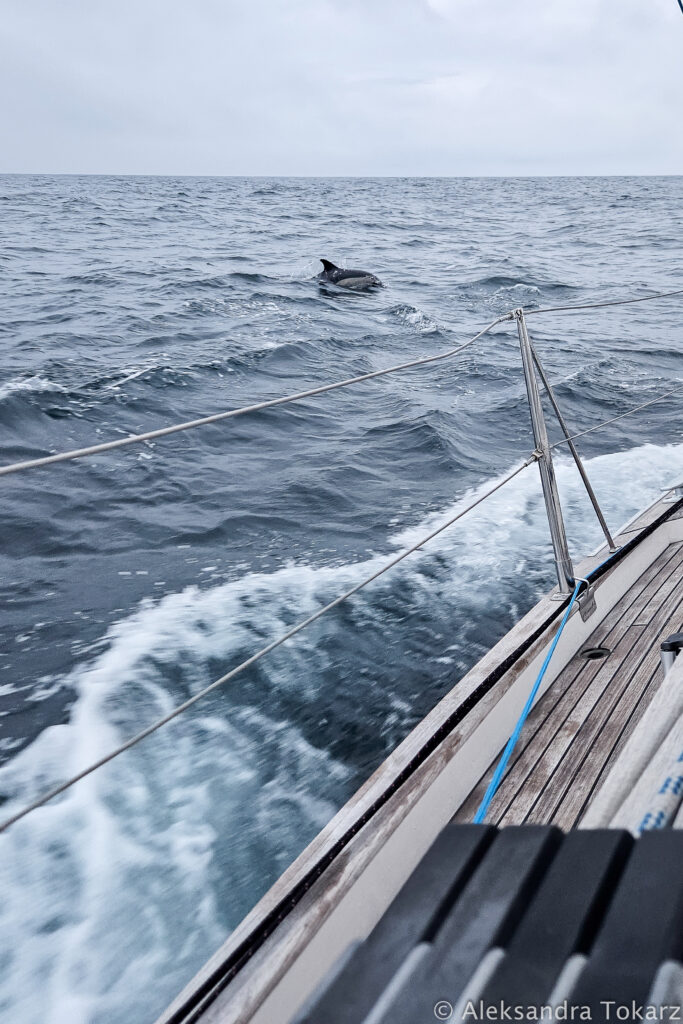



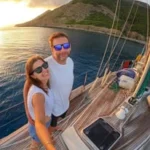


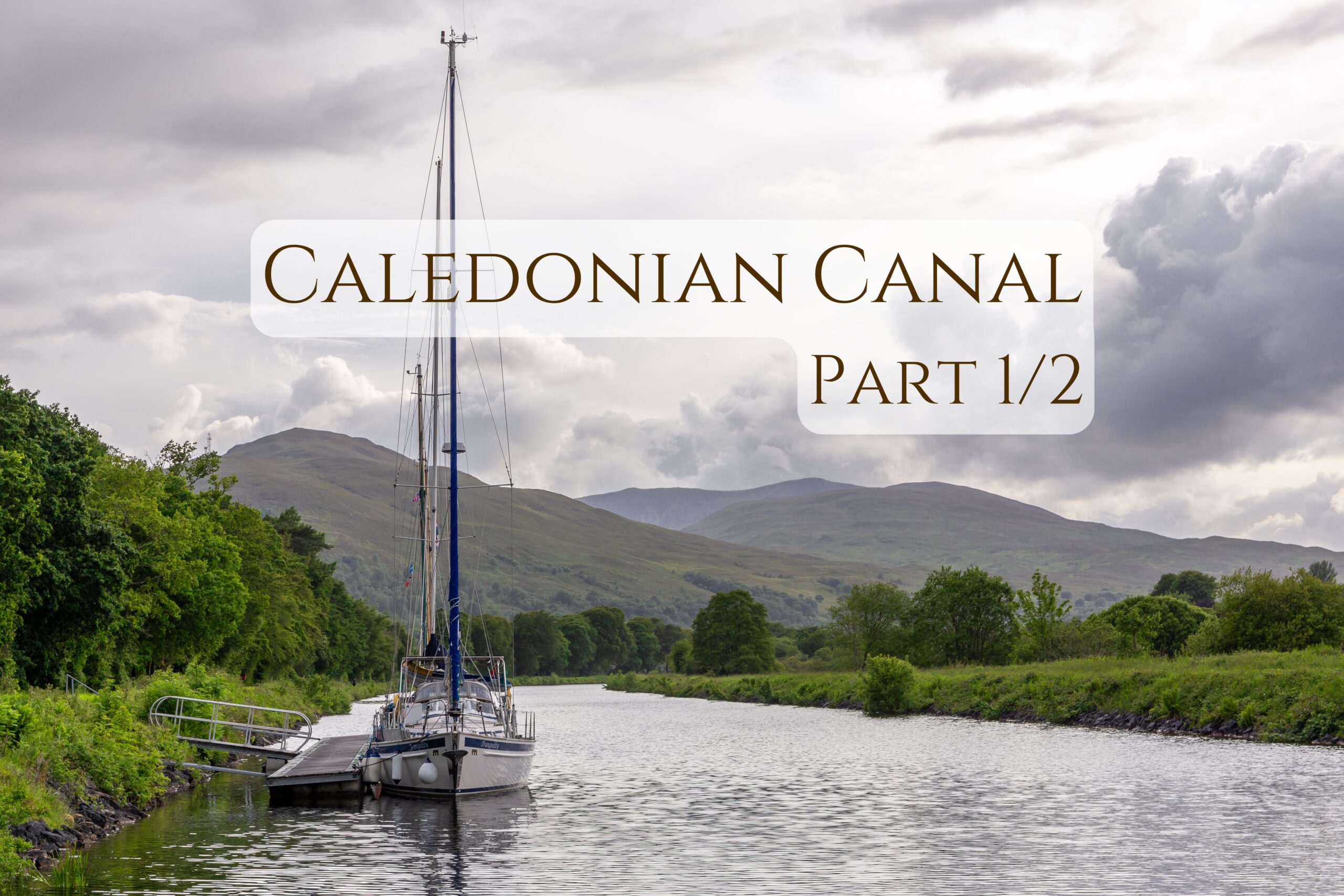
One response
Świetny artykuł. Byłem naprawdę szczęśliwy, że trafiłem na to miejsce . Wielu autorom wydaje się, że posiadają odpowiednią wiedzę na poruszany przez siebie temat, ale tak nie jest. Stąd też moje ogromne zaskoczenie. Muszę wyrazić uznanie za Twoją pracę. Zdecydowanie będę polecał to miejsce i częściej wpadał, by przejrzeć nowe posty.